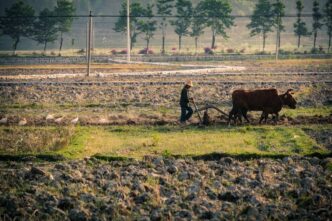As cities expand and populations soar, the challenge of ensuring food security has taken center stage. Urban farming, once a niche pursuit, is gaining traction as a viable solution. From vertical farms to community gardens, the movement is reshaping not only how food is produced but also how local economies function.
Take Singapore, for instance, a city-state with limited arable land but a burgeoning appetite for self-sufficiency. The Singaporean government has been investing in innovative agricultural technologies, promoting initiatives like the “30 by 30” goal, which seeks to produce 30% of the nation’s nutritional needs by 2030 through local farming. The Urban Redevelopment Authority has identified areas for vertical farming, transforming rooftops and vacant lots into productive green spaces.
The implications are profound. Urban farming creates job opportunities in areas often plagued by economic stagnation. For example, Farm Singapore, a local startup, has developed automated vertical systems that allow for high-density crop production. Not only does this approach yield fresh produce, but it also employs locals who might struggle to find work in traditional sectors. Coupled with government subsidies for sustainable practices, urban farming is proving to be an economic boon.
However, the journey is not without hurdles. The initial capital investment can be steep. Equipment, technology, and land leasing in urban areas demand significant financial backing. The challenge lies in navigating the complex landscape of local regulations that often lag behind the rapid pace of innovation. In the United States, for instance, many cities have restrictive zoning laws that limit the establishment of urban farms. Advocates argue for policy shifts that recognize the importance of urban agriculture in enhancing food security and promoting local economies.
Urban farming also has the potential to alleviate food deserts, areas where access to fresh produce is sorely limited. The nonprofit organization, Growing Power, based in Milwaukee, is a prime example. By transforming vacant lots into productive urban farms, they provide fresh vegetables to communities that otherwise rely on convenience stores and fast food. Their model showcases not only a practical response to food insecurity but also fosters community engagement, education, and empowerment.
Moreover, urban farming aligns with sustainability goals, reducing food miles and carbon footprints. By sourcing food locally, cities decrease reliance on long supply chains that often contribute to environmental degradation. The recent surge in consumer demand for locally sourced, organic produce has further incentivized urban farming initiatives. As people become more conscious of the environmental impact of their food choices, this shift not only encourages sustainable practices but also creates new market opportunities for urban farmers.
The potential for urban farming to reshape local economies is becoming increasingly evident. With policy support, financial investment, and community engagement, urban agriculture can become a cornerstone of economic resilience. The successes of initiatives around the world offer a roadmap for other cities grappling with the dual challenges of food security and economic development.
As urban farming continues to flourish, its role in sustainable economic growth cannot be overlooked. It represents a unique intersection of innovation, community engagement, and environmental stewardship, paving the way for a more resilient future in urban food production. The revolution may well be sprouting from the ground up, one vertical farm at a time.













